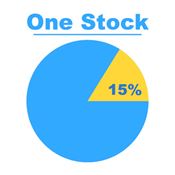How to Buy Samsung Stock
Investing in Samsung can be challenging for U.S. investors, but not impossible. With this guide, explore various options like OTC stock and ETF. Read on.
 |
Samsung has been one of the top 100 brands in the world for 3 years.
And its brand value grew by 17% in 2022, reaching $87.7 billion.[1] This makes it an extremely enticing investment option. However, U.S.-based investors may face challenges when purchasing Samsung shares.
In this guide, you'll learn how to buy Samsung stock and get updated with its latest developments.
Can you buy Samsung Stock?
Yes. Samsung is listed on the Korea Exchange (KRX) with a ticker symbol, KRX:005930. But it is not traded on major U.S. stock exchanges like NASDAQ or NYSE. Samsung Electronics trades on the over-the-counter (OTC) market in the U.S. under the ticker symbol SSNLF.
The company doesn't offer American Depositary Receipts (ADRs). This means it can be challenging for Americans to invest in Samsung.
But their Global Depositary Receipt (GDR) common shares are listed on the London Stock Exchange (LSE). And GDR preferred shares are listed on the Luxembourg Stock Exchange (LuxSE).
Now let's look at how U.S. investors can invest in Samsung.
How to Invest in Samsung
If you are interested in buying Samsung shares, there are three options for you to consider.
- Buy shares on the Korean stock market (KRX)
If you have access to local brokers or banks with broker services in South Korea, you can purchase shares on the Korean stock market. You can also invest directly after filing the appropriate paperwork.This option suits investors who want to invest directly in individual stocks on the Korean exchange.
- Purchase Samsung shares traded over-the-counter (OTC) in the U.S.
Samsung shares are also traded over-the-counter in the U.S., which means you can buy them through certain brokerages or online platforms.This option allows you to invest in Samsung without directly accessing the Korean stock market.
- Invest in a South Korean ETF
Another option is to invest in a South Korean ETF that includes Samsung and other Korean companies.Investing in a South Korean ETF can expose you to a diversified portfolio of Korean companies, including Samsung, in a single investment.
This option suits investors who prefer a more diversified approach and want to invest in the broader Korean market.
Below, you will find the steps to follow for each option and important factors to consider.
How to Directly Buy Samsung Stock
To invest in Samsung stock directly, you can buy shares on the Korean Stock Exchange or through a local firm/bank that trades in Korean Stock Market.
- Buy Samsung Shares Directly on Korean Stock Exchange[2]
To invest in Korea as a foreigner, you'll need an Investment Registration Certificate (IRC).To buy Samsung Electronics shares directly on the KRX, you can follow these simple steps:
- Register with the Financial Supervisory Service and obtain an investor registration certificate (IRC).
Get ready with these common requirements when applying for an investor registration certificate (IRC)
- Copy of your passport
- Investment ID application
- Registration of signature
- Standing proxy agreement
- Proof of resident status
- Copy of your passport
- Open a stock trading account at a Korean securities firm.
- Transfer funds.
- Trade shares in real-time.
- Register with the Financial Supervisory Service and obtain an investor registration certificate (IRC).
- Buy Samsung Shares Through Local Firms or Banks
U.S. investors can buy shares by opening an account at a local securities firm or bank eligible for trading Korean stocks. You can invest with a local broker in South Korea, such as Merrill Lynch International Inc.You can get their brokerage services by doing these simple steps:
- Open an account
- Deposit funds into the account
- Search or inquire about Samsung Electronics stock
- Place trade orders
- Open an account
If you are looking for other options, try investing in the OTC market or ETF.
How to buy Samsung OTC Stock
Another option to purchase Samsung shares is to use brokerage accounts to access the U.S.'s over-the-counter (OTC) market.
OTC allows investors to buy Samsung shares directly without going through the traditional stock exchange. But remember that OTC stocks may have lower liquidity.
Here's a simple guide to start your trade with OTC stock.
- Create your account on their website or app.
- Fund your account. Note that some platforms require a minimum investment.
- Search for Samsung using its ticker symbol, 'SSNLF'.
- Enter the number of shares or the dollar amount you want to buy.
- Place the order.
Once you have made the purchase, it is important to monitor your investment.
The over-the-counter (OTC) market is a decentralized network of dealers who trade securities not listed on major exchanges. It consists of individuals and firms that negotiate directly with each other over the phone or electronically rather than through a centralized exchange.
For a safer approach to investing, consider exploring ETFs.
How to Buy Samsung in Exchange-Traded Funds
For investors seeking a more diversified approach, investing in a South Korean ETF can be a viable choice.
It provides a convenient and efficient way to gain exposure to the Korean market and reduce the impact of company-specific risks.
Some popular examples are iShares MSCI South Korea ETF (EWY) and Xtrackers MSCI South Korea Hedged Equity Fund (DBKO). Approximately 23% of EWY holdings are allocated to Samsung's electronics division, reflecting its substantial presence.[3]
ETFs are a mix of stocks and index funds. They track market indices like the S&P 500 or Dow Jones and can be traded like stocks. Some ETFs focus on specific sectors, like biotechnology. They provide a convenient and diversified investment option for beginners.
You can start trading by choosing the right brokerage service, like Fidelity, Robinhood, or eToro.
Here's a guide to help you start investing in ETF.
- Open a brokerage account.
- Fund your account.
- Search for the ticker for your chosen South Korea-focused ETFs that provide exposure to Samsung. For example, you can search for EWY.
- Decide how much you want to buy.
- Place your order.
- Market order: Execute the transaction now at the current market price.
- Limit order: Set a specific price at which you wish to buy. This gives investors more control. But if the stock never hits your price, the trade will never be executed.
Pros and Cons
As with any investment, there are pros and cons when buying Samsung stock. Here's a breakdown of the potential advantages and disadvantages:
Pros
- Global presence and diversified business portfolio
Samsung is a large multinational company that has a strong global presence. They work in a variety of industries such as consumer electronics, semiconductors, and displays. Their diverse business portfolio offers opportunities to invest in different sectors and markets. - Leading technology in devices and electronics
Samsung is well-known for its innovative technology and holds a major position in the smartphone market. They are a top producer of memory chips, display panels, and other electronic components. Samsung's advanced technology allows them to take advantage of many opportunities for growth. - History of dividend payments
Investors who prioritize generating income may find Samsung appealing because the company has a history of paying dividends to its shareholders.
Cons
- Currency risks
As a U.S. investor buying Samsung stock, you are exposed to currency risk due to fluctuations in the value of the South Korean Won (KRW) against the U.S. Dollar (USD). - Market-demand dependency
Samsung's performance is influenced by consumer demand for its products and the overall market conditions in the technology and electronics sectors. - High competition with other companies
The technology sector is highly competitive, and Samsung faces tough rivals from other global tech giants, which could impact its market share and profitability.
Why invest in Samsung?
Samsung is a major South Korean company that produces various electronic devices. They make appliances, digital media devices, semiconductors, memory chips, and integrated systems. This brand is a well-known name in the technology industry, accounting for about 20% of South Korea's exports.
Samsung Electronics' Q1 2023 profits declined due to lower memory chip prices and weak demand, resulting in the lowest profit level since Q1 2009. However, Samsung regained its position as the leading global smartphone market share leader, with strong sales of premium models like the S23 Ultra.
This shows the company's ability to generate revenue from different segments. Also, it can provide a level of stability to its overall financial performance.
- Quarter Revenue: KRW 63.75 trillion (around $47.77 billion), a 10% decline from the previous quarter,
- Operating Profit: KRW 0.64 trillion (around $454.9 million)
- Net profit: KRW 1.57 trillion
What is Samsung's valuation?
Samsung's current valuation is $301.846 billion, and its price-to-earnings ratio (P/E ratio) is 35.60 as of May 2023.
The P/E ratio suggests that investors have high expectations for Samsung's future earnings growth. It reflects the market's confidence in the company's performance and its willingness to pay a premium for Samsung's shares.
Samsung's stock is currently trading at a price (KRW 72,100) lower than its estimated true value (KRW 78,508.46) by about 8%. This suggests that the stock might be undervalued. This means it could be a good opportunity for investors to buy it while it's priced lower than what it's really worth.
- Market Capitalization (Market Value)
Market capitalization (Market value) is how we measure the size of a public company. We do this by multiplying the current stock price by the number of shares outstanding. - Price to Earnings Ratio (PE Ratio)
The P/E ratio shows if a company is undervalued or losing money. Low but positive means high earnings, while high negative means heavy losses.
The P/E ratio can show market expectations and undervalued stocks that may be worth investing in. But, do thorough research and consider other factors before investing.
- Companies with a P/E ratio above 30 are often labeled as "growth stocks." This suggests that investors predict future growth or profitability.
- A negative P/E ratio means the company is losing money. Some investors may still predict future growth but this ratio simply means present unprofitability.
- While positive P/E ratios below 10 are generally regarded as "value stocks." These stocks have a current price that is lower than their intrinsic value, so it's like buying stocks at a discount.
Bottom Line
If you're interested in investing in Samsung, several options are available. You can purchase shares directly on the Korean stock market, buy Samsung shares on the OTC market, or invest in a South Korean ETF.
It's important to consider your investment goals and risk tolerance before deciding which option is best for you.
References
- ^ Samsung. Samsung Electronics' Brand Value Makes Double-Digit Increase, Retrieved 10/6/2023
- ^ Samsung. How to buy stock, Retrieved 10/17/23
- ^ Yahoo Finance. iShares MSCI South Korea ETF (EWY), Retrieved 10/7/2023
- ^ Samsung News. Samsung Electronics Announces First Quarter 2023 Results.Retrieved 08/05/2023
Write to Miel Ysabel at feedback@creditdonkey.com. Follow us on Twitter and Facebook for our latest posts.
|
|
| ||||||
|
|
|







